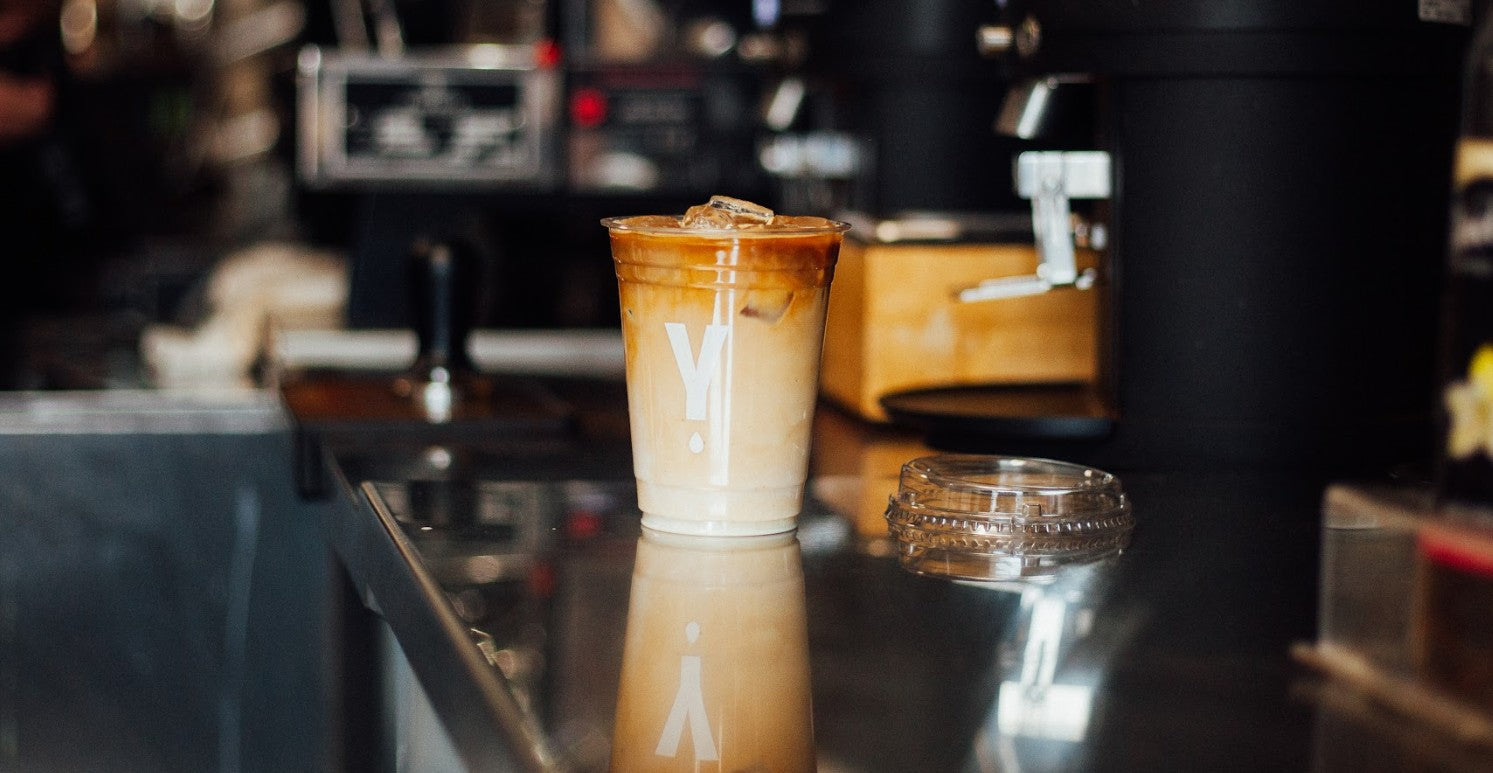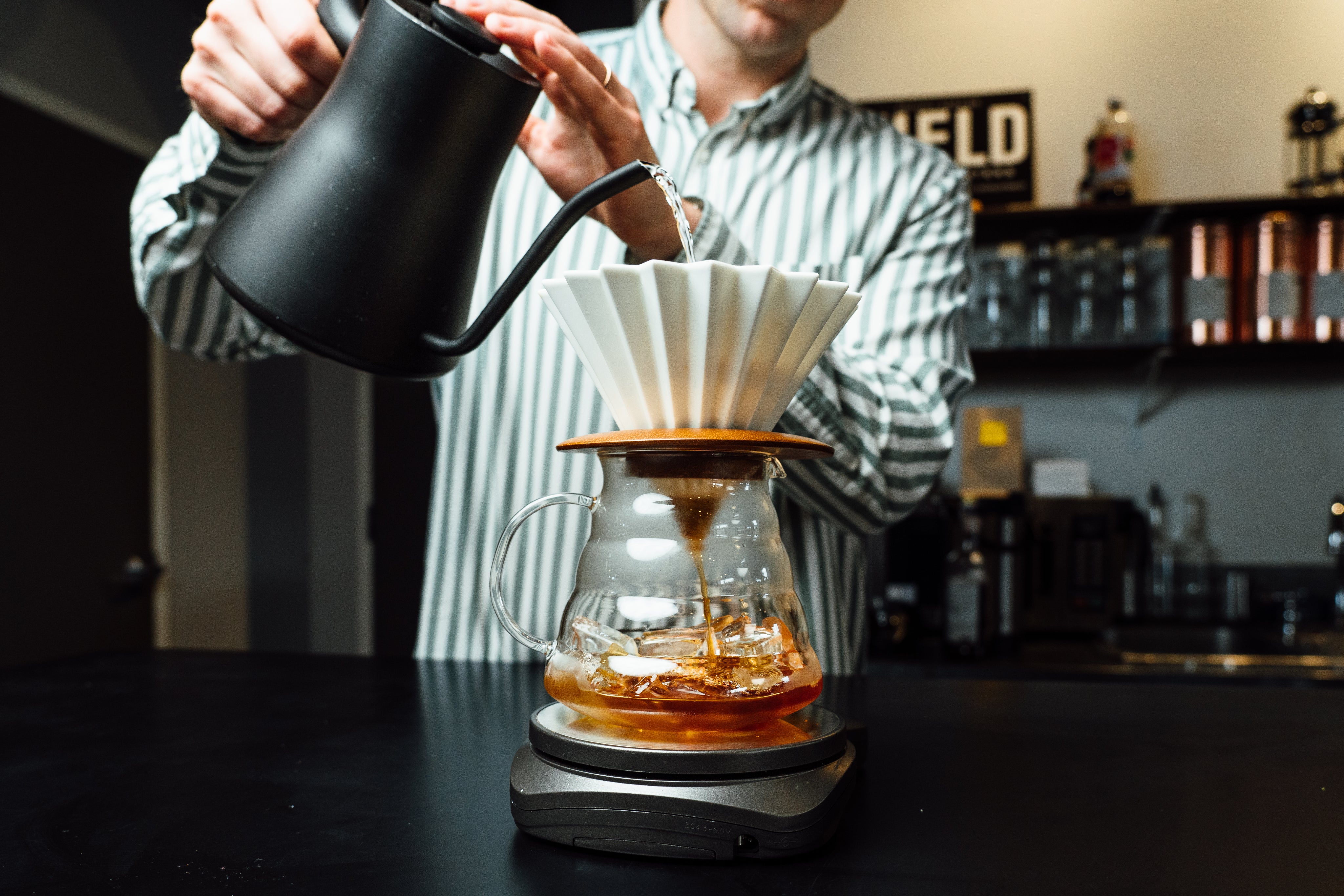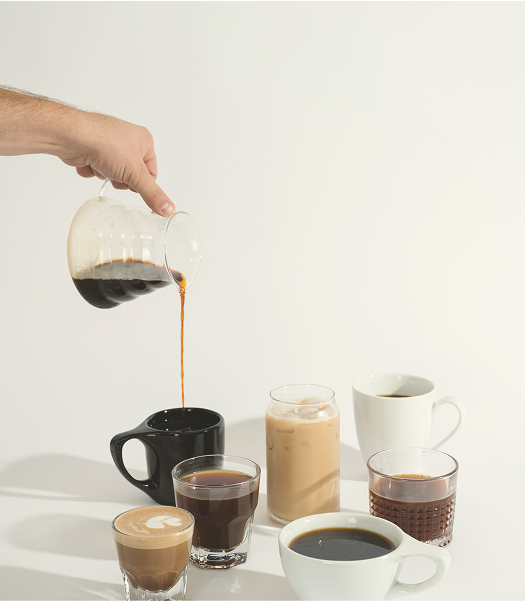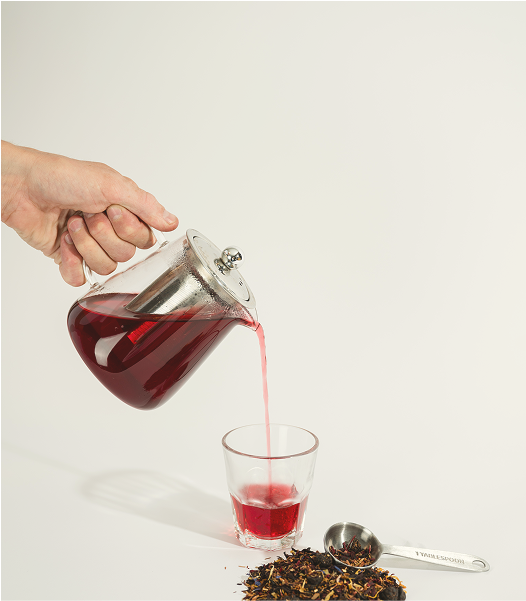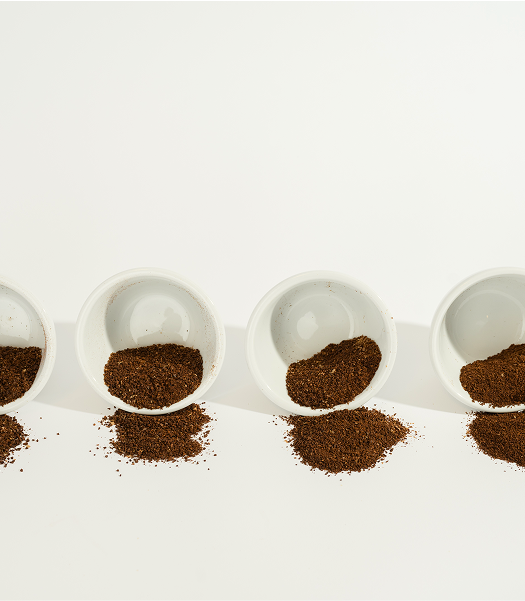Free Shipping on Orders Over $50
Difference Between Cold Brew and Iced Coffee
Two chilled formats; two very different extractions. Here’s how to choose—taste, caffeine, ratios, and ops fit—whether you’re brewing at home or scaling a menu.
The difference between cold brew and iced coffee comes down to extraction strategy. Cold brew uses long, cool immersion for rounded sweetness and low perceived acidity; iced coffee is hot-brewed and rapidly chilled, preserving aromatics and sparkle. At YIELD Coffee Roasters in Cincinnati, we help consumers and business owners decide which path aligns with their flavor goals, workflow, and margin targets—while staying true to our relational, ethical sourcing model.
TL;DR — Side-by-Side Comparison
| Factor | Cold Brew | Iced Coffee |
|---|---|---|
| Brew temp & time | Cool water, 12–24 hours (immersion) | Hot extraction, 3–5 minutes, rapid chill/over ice |
| Grind size | Very coarse (limits fines; helps clarity) | Medium to medium-fine (method-dependent) |
| Typical ratios | 1:12 ready-to-drink; 1:8 concentrate | 1:14–1:16; for Japanese-style, replace 40–50% brew water with ice |
| Flavor | Rounded sweetness, chocolate/caramel, low acidity | Brighter acidity, higher aromatics, cleaner body |
| Caffeine | Concentrate can be potent by volume; serving strength = dose × dilution | Depends on dose and serving size; not inherently “weaker” |
| Shelf life | Refrigerated hold is practical for service windows | Best brewed to serve; avoid hot-plate staling |
| Ops fit | Batchable; great for signature drinks | Bar-forward; showcases origin nuance on demand |
If you operate a café or restaurant and want ratios, steep curves, and SOPs, explore our wholesale program for training and menu support.
What Is Cold Brew?
Method & Variables That Matter
Cold brew is an immersion process: coffee and cool water steep together for hours. Key levers include grind (very coarse), water chemistry, steep temperature, contact time, agitation, and filtration. Coarse grind reduces fines, which improves clarity and reduces bitterness after long contact times.
Flavor & Use Cases
Expect rounded sweetness, low perceived acidity, and a syrupy mouthfeel—ideal for milk builds, flavored signatures, and batchable cold programs. If your menu leans toward chocolate, caramel, or dessert-style profiles, cold brew is a natural fit.
Ratios: Ready-to-Drink vs. Concentrate
- Ready-to-drink: 1:12 coffee:water; steep 14–18 hours at 39–68°F (4–20°C); filter through fine mesh, then paper.
- Concentrate: 1:8; steep 12–16 hours; dilute 1:1 to 1:2 for service depending on target TDS and flavor.
For house specs calibrated to your water and grinder, our coffee blog is a good starting point—and our team can help you dial in service flow.
What Is Iced Coffee?
Two Approaches
- Japanese-style iced pour-over: Brew hot directly over ice by replacing 40–50% of brew water with ice in the server. This locks aromatics and acidity for a crisp, expressive cup.
- Batch brew then rapid chill: Brew slightly stronger than hot service, then chill immediately. Avoid leaving coffee on a hot plate; quality collapses quickly.
Flavor & Use Cases
Iced coffee amplifies origin nuance—fruit, florals, delicate acidity—so it’s great for seasonal single origins and tasting flights. It’s the right call when you want speed on bar and a clean, sparkling profile.
Ratios & Grind
- Ratios: 1:14–1:16 depending on strength target and ice fraction.
- Grind: Medium to medium-fine; total brew ~3–4 minutes for pour-over; follow your brewer’s spec for batch.
Want more “how-to” content? Browse brew education on our coffee blog and adapt to your water and equipment.
Taste, Acidity, and Caffeine — Clearing Up Myths
Cool extraction mutes acidity and emphasizes sugars—hence cold brew’s rounded profile. Hot extraction preserves volatile aromatics and brightness, so iced coffee presents more lift. Regarding caffeine, neither method is “stronger by default.” Concentrate is potent per ounce, but the served caffeine hinges on dose, dilution, and serving size.
How to Make Iced Coffee vs. Cold Brew (Step-by-Step)
Cold Brew — Ready-to-Drink
- Weigh coffee and water at 1:12. Grind very coarse.
- Combine in a clean vessel; optional gentle stir to wet all grounds.
- Steep 14–18 hours refrigerated (or cool room temp).
- Filter through fine mesh, then paper for clarity.
- Hold sealed in the refrigerator and label with brew date.
Cold Brew — Concentrate
- Weigh at 1:8; grind very coarse; steep 12–16 hours.
- Filter well; dilute 1:1 to 1:2 for service; adjust to taste by TDS.
Iced Coffee — Japanese-Style Pour-Over
- Replace 40–50% of brew water with ice in the server.
- Heat brew water to ~200°F; grind medium-fine.
- Bloom 30 seconds; finish pours in pulses; total brew ~3–4 minutes.
Iced Coffee — Batch Brew + Rapid Chill
- Brew slightly stronger than hot service (e.g., toward 1:14).
- Chill immediately (ice bath/chiller); never keep on hot plate.
- Serve over fresh ice; monitor dilution with consistent cup ice levels.
If you’re a business owner, our wholesale program provides SOPs, training, and QA so the cup holds up at rush.
Troubleshooting & Optimization
- Cold brew tastes flat: Shorten steep by 2–4 hours; coarsen grind slightly; blend in a brighter origin.
- Iced coffee tastes weak: Increase dose or reduce ice fraction; grind one click finer; target ~200°F water.
- Harsh bitterness: Over-extraction; coarsen grind, reduce contact time; refresh filters; hold colder.
- Inconsistent results: Use scales/timers; standardize ice; clean brewers; log grind settings by coffee.
Which Should You Choose?
Consumers: If you like chocolatey sweetness and low acidity—or want a fridge-friendly format—choose cold brew. If you prefer sparkle and origin nuance on demand, choose iced coffee.
Business owners: Cold brew shines for batchability, signatures, and predictable throughput. Iced coffee shines for bar-forward service and showcasing single origins. Many programs run both—each addresses a different job-to-be-done.
The YIELD Difference for Cold Drinks
We source relationally and roast intentionally so your chilled coffees perform—not just taste sweet on day one. Our Cincinnati team supports partners with brew guides, staff training, and ongoing QA. If you’re considering a seasonal cold lineup or a year-round program, we can help you design ratios, holding protocols, and menu builds that convert.
Ready to accelerate your cold program? Explore our wholesale program or scan practical how-tos on the YIELD coffee blog.
FAQs
What is the difference between iced coffee and cold brew? Iced coffee is hot-brewed and chilled; cold brew steeps cool for hours. The former preserves aromatics and brightness; the latter emphasizes sweetness and low acidity.
How to make iced coffee vs. cold brew? For iced coffee, brew hot (pour-over or batch) and chill fast—optionally over ice. For cold brew, combine coarse grounds with cool water and steep 12–24 hours, then filter.
Is cold brew stronger than iced coffee? Cold brew concentrate is stronger per ounce, but served caffeine depends on dose, dilution, and cup size.
How long does cold brew last? In a clean, sealed container under refrigeration, 5–7 days is a practical quality window. Always follow food-safety standards.
Which beans should I use? For cold brew, chocolate-leaning lots (e.g., Brazil/South America) perform well. For iced coffee, fruit-forward single origins (e.g., Ethiopia/Kenya) shine. See ideas on our coffee blog.
YIELD Coffee Roasters is a Cincinnati roaster committed to relational sourcing, ethical impact, and empowering partners through training and QA.

